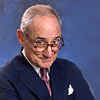
|
New York Architecture Images-New York Architects Robert A. M. Stern |
|||
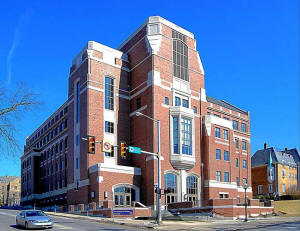 Gerald R. Ford School of Public Policy 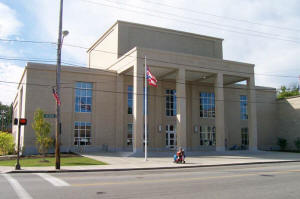 Lakewood Public Library 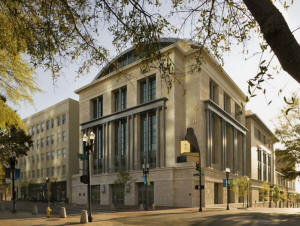 Jacksonville Public Library 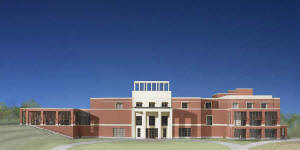 George W. Bush Presidential Center 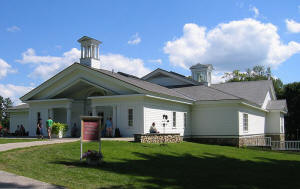 Norman Rockwell Museum in Stockbridge, Massachusetts (1993) 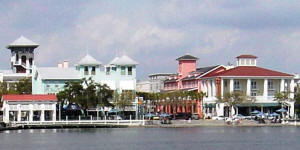 Master Plan for Celebration, Florida (1997) (used for Truman Show) Nashville Public Library, Nashville, Tennessee (2001) 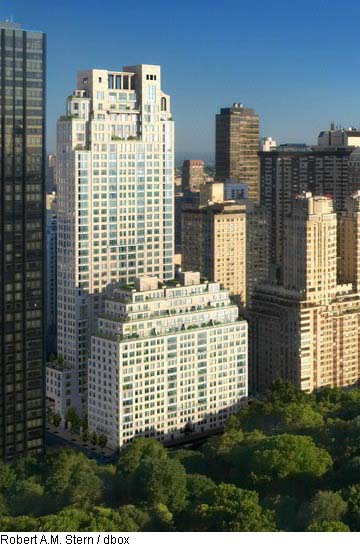 Fifteen Central Park West, New York City (2007) 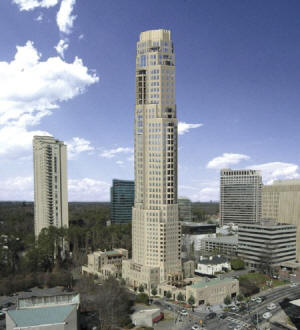 The Mansion on Peachtree, Buckhead, Atlanta, Georgia (2002). |
||||
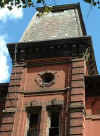 |
||||
| 027 Excellence Charter School | ||||
|
(Robert Arthur Morton Stern), 1939–, American
architect, b. New York City. He studied architecture at Yale Univ.,
became a practicing architect in the mid-1960s, and a professor of
architecture at Columbia Univ. in 1970. He and John S. Hagmann were
partners from 1969 to 1977, when Stern opened his own firm. An important
figure in architectural
postmodernism, he is particularly skilled at adapting historical
styles to a contemporary context and at integrating buildings into their
settings. Primarily known for his residential structures, he also has
been involved in larger projects, such as the massive renovation of New
York City's Times Square (1992–). Stern's many books include New
Directions in Architecture
(1969) and Pride of Place: Building the American Dream (1986), a
companion to the television series he created and hosted for the Public
Broadcasting System. Stern was appointed dean of the Yale School of
Architecture in 1998.
Robert A.M. Stern is a practicing architect, teacher, and writer. Mr. Stern is a Fellow of the American Institute of Architects and received the Medal of Honor of its New York Chapter in 1984. As founder and senior partner of Robert A.M. Stern Architects, he personally directs the design of each of the firm's projects.
|
||||
|
The 30-Minute Interview- Robert A.M. Stern By VIVIAN MARINO June 19, 2012 NYT Mr. Stern, 73, a modern traditionalist architect, is the founder of Robert A. M. Stern Architects, the dean of the Yale School of Architecture and the author of several architecture books. His firm, based in New York, has been involved in many projects worldwide, including a revitalization of Manhattan’s theater district. One of his most notable buildings is 15 Central Park West, where a penthouse was recently bought through a trust linked to a Russian fertilizer billionaire for $88 million, the most ever paid for an apartment in New York City. Interview conducted and condensed by VIVIAN MARINO Q. I have to ask you straight away: Did you ever, in your wildest dreams, think that 15 Central Park West would become as successful as it is today, with deep-pocketed foreigners paying record-high condo prices? A. I always thought it was going to be a very important building, and I thought it would find a particular place in the market of people who appreciate what it means to live in New York. But I can’t say that I ever imagined that it would reach the stratospheric heights from a real estate point of view that it has. Q. What’s the big attraction? A. At 15 Central Park West, I was very much cognizant of the great buildings that surround Central Park. And the apartments are also very special. We have produced apartments at 15 Central Park West that do live up to the reputation of prewar accommodations. Q. You currently live in another building you designed, the Chatham, on the Upper East Side. Did you ever consider relocating to 15 Central Park West? A. I’m very happy there. So I didn’t think of moving, no. When I moved to the Chatham, of course, I had my pick of apartments in the building and I was able to tinker around with one. My living room and dining room is a big, long room that has windows on three sides — that’s a luxury in New York — and it overlooks a garden and it has French doors that can be opened up until, unfortunately, the moths come in. Q. Many of your buildings like 15 Central Park West and the Chatham have that prewar aesthetic. But there are some critics who call your designs too traditional, even uninspiring. A. Well, if it’s too traditional or uninspiring to them, there are others who find it traditional in an inspiring way — that one can go back to go forward and restate things that are there. I think that the obsession with the new-new thing is O.K. for computer apps. Architecture is about place and time in the long sense of the word. Q. Would you say you favor the neo-Classical style? A. Well, I wouldn’t use the term neo-Classical. I like to work in the traditions of the local place wherever I’m building. Q. Is there a way, though, to define your overall style? A. We’re not interested in this office in personal style. We’re interested in finding the expression for each project in relationship to what we and our clients think is appropriate to the project, to the place. So what we build in Manhattan and different sites in Manhattan are different. I don’t see architecture as being about autobiography. I see it more as an art of portrait painting. Portraits of places, institutions. Q. Do you have a favorite property type, or maybe even a building that you’ve designed? A. I would never say because then I’d have a client who would say, “Oh, you’re not interested in my project.” And, no I never have a favorite building. I have a favorite son, because he’s my only son. Q. You’ve also been referred to as a “starchitect.” A. That’s a term used for a lot of people. But since my name is Stern and “Stern” means star, I think that’s perfectly good. It’s all the other people that are intruding. Q. So how is business? A. We’re pretty busy. I would say that we’re maybe a little bit busier than last year, but I wouldn’t use us as an indicator of the economy. Q. How many projects is the firm working on now? A. We are working on quite a few projects — about 95, either on the boards or in construction — and we’re entered into some competitions. Our practice is really quite international. We have projects on mainland China and in Hong Kong, and we have some commercial office buildings in India under construction and then one in Paris that’s under construction. A lot of the institutional work tends to be in the United States, on college campuses. Q. How involved are you in each project? A. It’s a collaborative venture, but I would like to think that I put my hand on everything. I always get involved in the beginnings of the projects most intensely. Q. One of your new projects is a building for the Related Companies, at the Hudson Yards site on the Far West Side of Manhattan. A. Yes, and it’s going into construction soon. We’re in the foothills of the Hudson Yards. It’s right outside our windows here. I’m going to lose our view. Q. How do you divide your time between running an architecture firm and the architecture school at Yale? A. Well, I try during term time to be there three days a week and two days in the office. And I use my weekends to catch up on things for both of my masters, as it were. But in the summer I spend a little less time in New Haven. On the weekends I also tend to do my writing. Q. I’ve heard that you never use the computer. A. This office is totally computer-sophisticated, but I personally don’t use the computer. I still draw and sketch; I love models. I think the computer is a wonderful tool, but it tends to alienate designers in the relationship between their hand, eye and brain. The architects I admire mostly don’t use the computer for design; they use it to realize their projects. Q. I see you’re wearing your trademark yellow socks. A. Yes I am. I always wear my yellow socks. I’ve become famous for my yellow socks, so I can’t not wear my yellow socks. Sometimes on the weekend, though, I go crazy and wear blue ones. Source- http://www.nytimes.com/2012/06/20/realestate/commercial/the-30-minute-interview-robert-am-stern.html?_r=0 |
||||
|
links |
||||